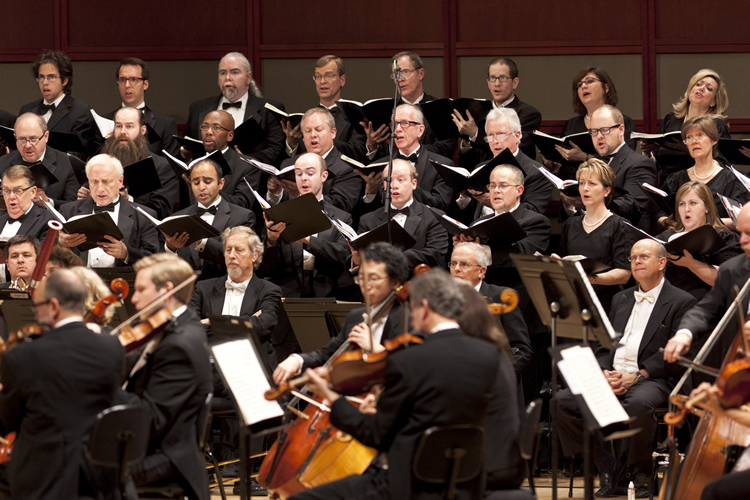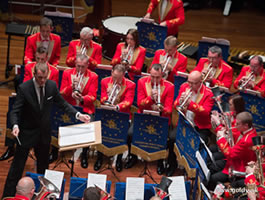The Christmas season brings numerous performances of the Messiah by George Frideric Handel (1685-1759) throughout our state. Most have been affected by the Early Music or HIP (Historically Informed Performance) movement. Many use modern instruments but have made practical adjustments, such as reduced use of string vibrato, along with a reduced number of musicians to approximate the forces and style of the 18th century. The text, prepared by Charles Jennings, covers both the Christmas and the Easter portions of the Christian year. The deeply inspired music of Handel is magnificent, and the text fits many music lovers’ spiritual moods.
This complete performance by the North Carolina Symphony and members of the North Carolina Master Chorale – the first of three – was superb in every way, enabling listeners to take new looks at a piece most people think they know. The pre-concert program in the west lobby of Meymandi Concert Hall repaid attendance by providing deeper understanding of guest conductor Douglas Boyd‘s approach: presenting Messiah as if it were a world premiere with everything looked at afresh. He and bass Christòpheren Nomura (singing his 175th Messiah) gave many fascinating details including the musical reasons for Boyd’s “radical” approach to the “Hallelujah Chorus.”
Boyd directed the reduced North Carolina Symphony in a lithe, fleet, and rhythmically vital performance. The string ensemble was unusually transparent, and the players’ gave full value to the conductor’s desire closely to “paint” instrumentally the meaning of the words in the text.
The effective continuo usually consisted of principal cellist Bonnie Thron and principal double bassist Leonid Finkelshteyen along with harpsichordist Beverly Biggs and David Jernigan (of Raleigh’s Christ Church), the chamber organist. Fine prominent solos were given by concertmaster Brian Reagin and principal trumpet Paul Randall.
The North Carolina Master Chorale had been superbly prepared by their director Alfred E. Sturgis. Diction and dynamic response were excellent. Even during canonic passages in which all four choral sections had independent lines, the words could be easily followed. Boyd’s refreshing approach to the “Hallelujah Chorus” was especially effective. The large audience obeyed Boyd’s wishes, staying seated and silent, and was rewarded with a much more sensitive treatment than usual, one built from a subtle, quiet opening to a rousing finale. I hope this restraint will become the new tradition!
Boyd had a superb and very evenly matched vocal solo quartet. Soprano Joélle Harvey possesses a warm, silvery tone, and her voice is evenly supported across its range. There was an almost Mendelssohnian “lightness” in the orchestral accompaniment to Harvey’s fleet delivery of “Rejoice greatly.” Alto Susan Platts has a very firm lower range that brought a welcome gravitas to her passages. There was a welcome darkening in “But who may abide the day of his coming” that combined with fleet agility for the fast paced “For He is like a refiner’s fire.” Tenor Robin Tritscher has an extraordinarily mellifluous timbre, and the flexibility of his singing was a constant pleasure. There was no lack of power or refinement in bass Nomura’s delivery of the great recitative “Thus saith the Lord” with its shaking of the heavens and earth! The pronunciation of all four soloists was flawless.
Don’t miss one of the two remaining performances, for details of which, see the sidebar.












